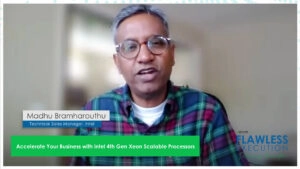Flawless Execution: Computing At The Edge
Edge computing – what is it? How does it work? Where does it apply? Tyler Kern discusses the possibilities and use cases with Bill Pfeifer, Edge Message Director of Dell Technologies. “At Dell, we define the edge as the place where data is acted on, near its point of creation, to generate immediate essential value,” said Pfeifer. The edge gathers data that could otherwise be compromised in the cloud or has a short-term value.
A recent Forbes article described it as “edge computing goes beyond the traditional type of computing, such as existing mobile phones or personal computers.” The concept is that edge captures data, runs it through AI algorithms to gain insights, then runs it through a processor to trigger the desired action. The distributed computers sense local environments and enable devices to perform actions independent of humans but consistent with wants. “We’re capturing this streaming data. Again, it’s usually privacy-sensitive, or speed-sensitive, or size-sensitive,” said Pfeifer.
The autonomous vehicle is a prime example of edge computing. An immense amount of video data is collected, processed, and triggers the desired action. “Five minutes later, that video is worth nothing. But in sub-second response time type stuff, it’s immensely valuable,” said Pfeifer.
The use of the edge is unique to a range of industries. “It’s getting much more vertical-specific, and it’s custom tailored,” said Pfeifer. Streamlining operations, implementing AI, improving energy management, enhancing employee safety, and site management are a few uses evaluated in a recent article from Enterprise Project. Pfeifer discussed streamlining a traffic camera system. Before implementing edge computing, the intersection had six different cameras for processing different information. One was for facial recognition, another for speeding, and another to register license plates. The edge computing solution reduced the camera to one and processed the information six times. Listen to the entire episode now for additional insights on the exciting possibilities of edge computing.









